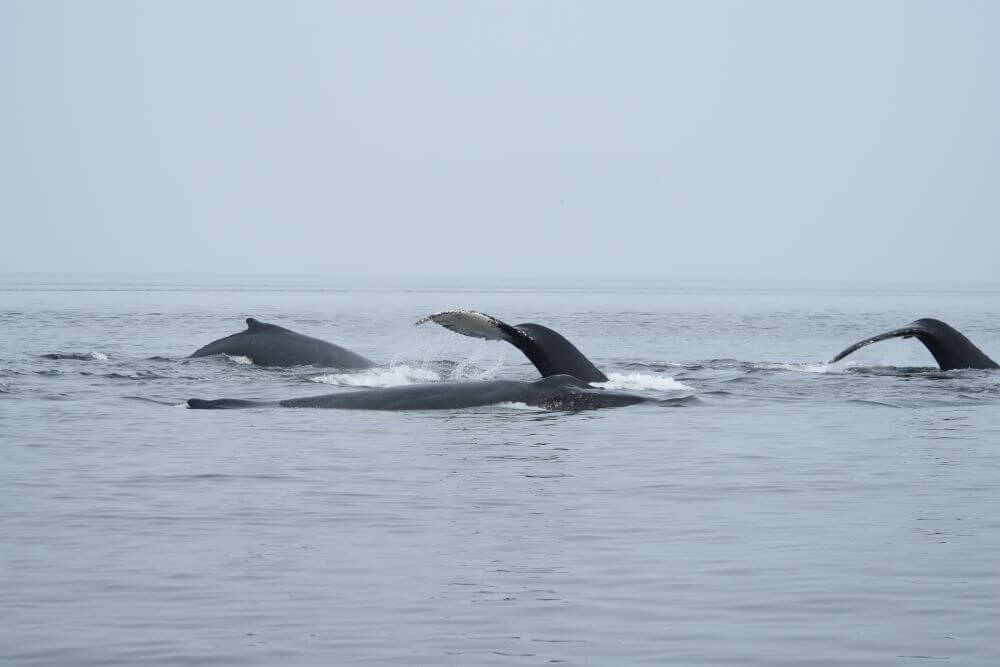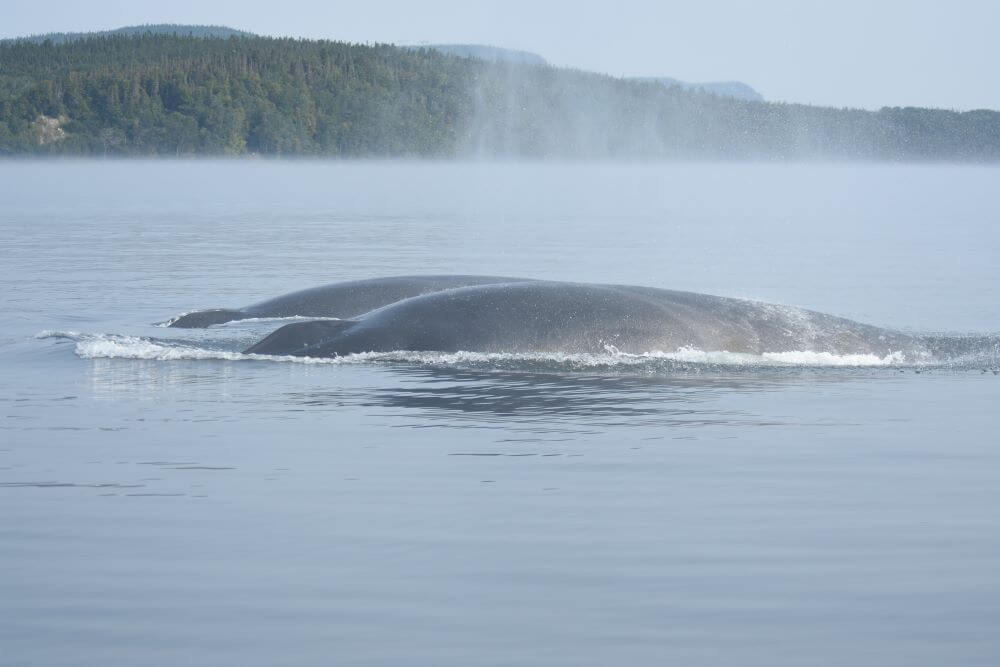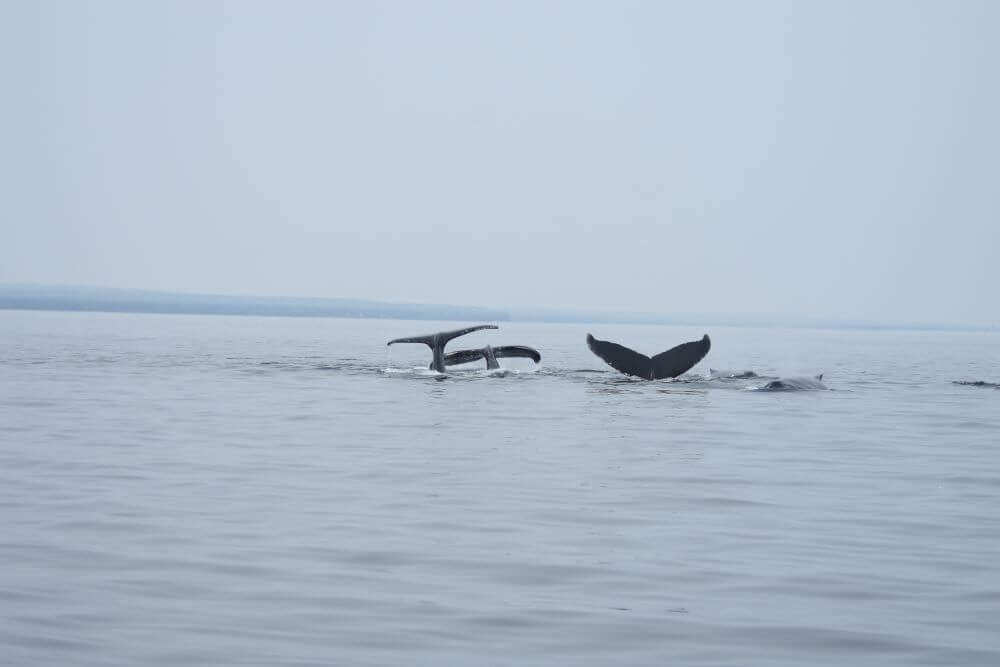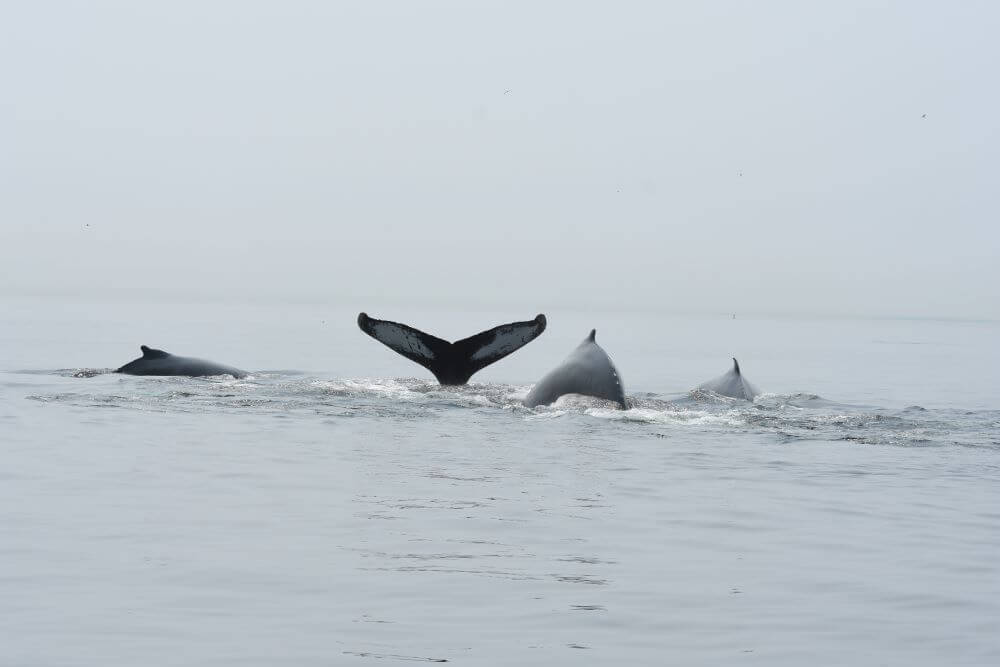By Mathieu Roy
As a research assistant, I have the chance to spend part of my days aboard whale-watching cruises to photograph three of our cetacean species in the Estuary: the fin whale, the humpback whale and the blue whale. The Saguenay-St. Lawrence Marine Park has a way of always surprising and amazing us. On the morning of August 5, I could never have predicted what the River had in store for us.
8:30 a.m. I prepare my gear, put on my insulated jacket and head for the boat. However, my expectations are quite low, as a dense fog awaits us just outside the marina. The wind is virtually non-existent, which usually means the fog is with us to stay. At least there are no waves in sight.
We’re barely out of the marina when we hear one… two… three… four… five… six… SEVEN big blasts! Fin whales? Humpbacks? There’s no way of knowing, as visibility is next to zero. We can only hear them! All of a sudden, it’s silent again. The whales dived. Disappointed that I failed to photograph whales that were surely very close, I remain optimistic, knowing that they should resurface soon. We wait and wait, but there’s no sign of them anywhere. Considering that fin whales can reach speeds of up to 40 km/h (hence their nickname, “greyhounds of the sea”), the animals may very well have slipped through our fingers. The captain then decides to head for the reference landmark known as “the scree”, where a clearing seems to have formed in the fog.
Once we get there, we spot several grey seals, but no whales. As I watch a large seal on the starboard side of the boat, a geyser erupts behind me. I turn around and spot the large dorsal of a fin whale just a few metres in front of me. Suddenly, two more spouts across the other side of the boat, four off the stern and two off the bow! We suddenly find ourselves surrounded by nine 40-tonne animals, that’s a combined total of 360 tonnes! I scramble to take my camera out of its case to photograph them, but quickly realize that I have a little problem: The fin whales are too close to take decent photos for identification. The greatest problem you can have when you’re out in the field! Once the whales dive, I tell myself that it will be difficult to do any better than this, especially considering the sub-optimal visibility.
No sooner had I finished my thought when the silhouette of a humpback propelling itself completely out of the water pierces the fog about 1 km away. The captain therefore decides to cautiously approach this individual, which was accompanied by six of its peers. Once we get closer, we patiently wait for them to surface again. After a few minutes, Gaspar’s calf breaks the surface about a hundred metres from the boat, followed by its mother, Yvon, H917, H871, H943 and finally NiCa 49.
The seven whales take a few breaths and suddenly change direction. They are heading directly toward us. They come closer… and closer… and closer still. Once again, we find ourselves surrounded by a group of whales, only this time, they’re humpbacks. When whales approach on their own, it is sometimes difficult for captains to maintain the mandatory 100-metre distance stipulated in the regulations of the Saguenay-St. Lawrence Marine Park. In these types of situations, marine activity regulations require that captains put themselves in neutral to avoid accidents. They must then wait until the whales have moved far enough away before they themselves continue their course.
From the boat, I observe the animals through the clear water and contemplate their sheer size. It blows me away that such enormous animals can be so graceful at the same time. Soon after, the whales quietly continue on their way and we observe them one last time before moving on to explore other sites within the Marine Park.
As I describe my outing, I realize how much I sound like a fisherman exaggerating the size of his catch of the day. But it’s also when I understand how lucky I am to do the job I do.









